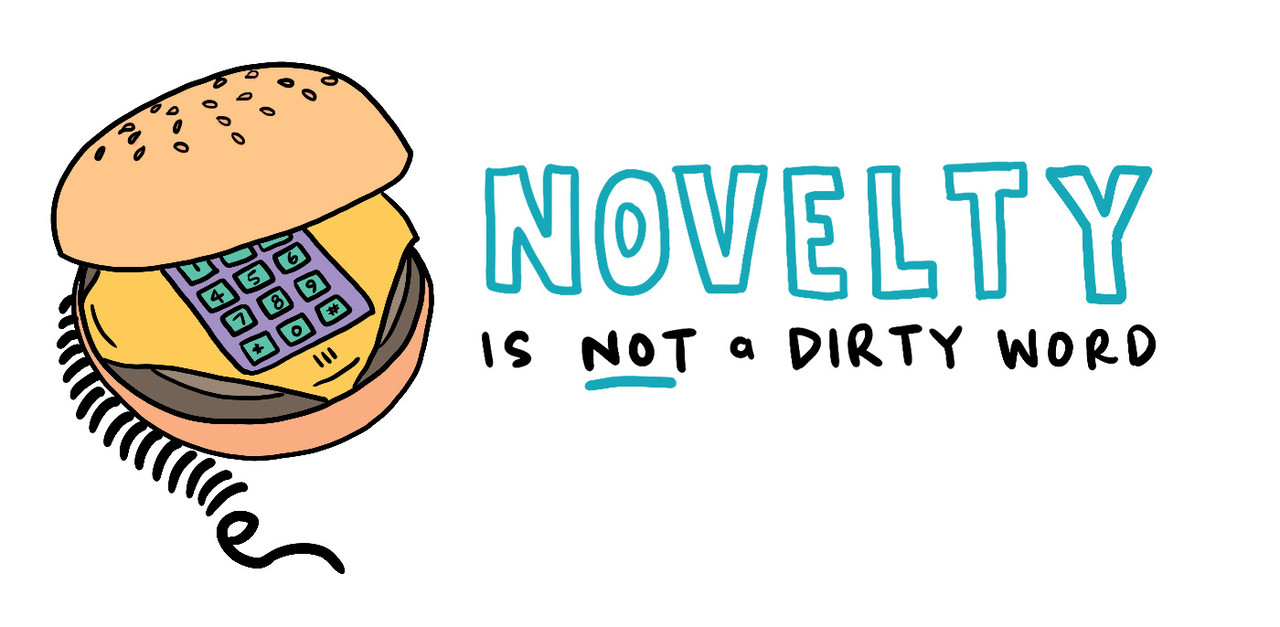Novelty is not a dirty word
Something we are always up against as Graphic Recorders is being seen merely as a novelty act, and we are constantly working to educate our clients on the value we bring to the facilitation of a session and the ongoing value of the artefact we create.
The work we do helps guide and provide frameworks for conversation, engages mind-wandering audiences, increases memory retention up to 6 x, creates a clear and common understanding of content, and helps participants to emotionally connect to content through colour and imagery. Certainly more than mere novelty, right?
However, as long as it’s framed as an AND – not an ONLY – the element of novelty in our work may actually be much more valuable than we think.
When it comes how our brains work, you may have heard the expression “what fires together, wires together” in relation to neurons and how we learn. Our brain cells communicate with one another via synaptic transmission – one brain cell releases a chemical (neurotransmitter) that the next brain cell absorbs. This communication process is known as “neuronal firing.” Under the right conditions – repetition, emotional arousal, novelty, and the careful focus of attention – neural firing can lead to the strengthening of synaptic connections, and this strengthening of connections is how we learn. The process of Graphic Recording has the potential to provide all the required conditions for strengthening these connections, and in turn strengthening learning.
Novelty also appears to have an impact on learning when it comes to memory. We know that the neurotransmitter dopamine is involved in making strong memories. Studies have shown that attention-grabbing, novel experiences (especially environmental novelty) activate the neurons that carry dopamine to the hippocampus, which plays a large role in memory. If this novel experience happens around the time of learning, our memories will be stronger.
The link between novelty and dopamine release also means that novelty motivates us and makes us feel good. Historically dopamine was often referred to as a “reward chemical”, but more recent research suggests that it’s actually more closely related to our motivation to seek reward rather than be the reward itself. When we see something new, we see that it has a potential for rewarding us in some way. This is turn motivates us to explore in search of reward. Because our brains are amazingly fast learners, this will only occur in relation to something completely new – which is why hand-drawn visuals can be so damn effective. With our mere-mortal hands, we can’t help for them to be anything but completely new!
So from now on I’m going to wave the NOVELTY flag with pride, because if novelty = strong learning, better memory retention and increased motivation… then what’s not to love?





